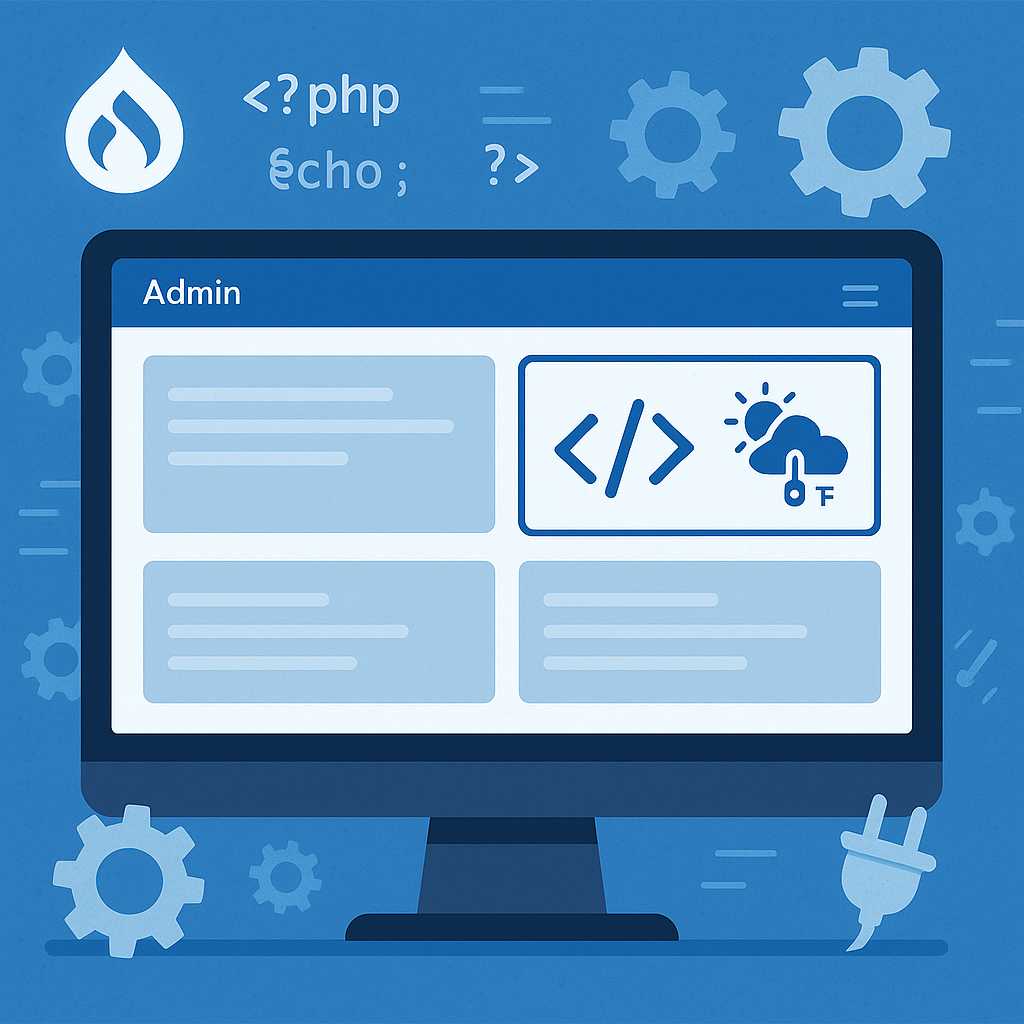As a Drupal developer, there will inevitably be a time when the stock block types provided just don’t cut it. Maybe you need to display data from an external API or create a specialized widget for editors. Whatever the case, Drupal’s Block Plugin API makes it easy to create your own custom blocks with PHP. Today, I’ll walk you through the basics of building and configuring a custom block in Drupal 9 or 10.
Why Use Custom Blocks?
Custom blocks let you go beyond the capabilities of core and contributed modules. They’re perfect for integrating dynamic content, custom forms, or any other feature you want to appear in your site’s layout regions. Using the Block Plugin API ensures your work follows Drupal best practices and takes advantage of caching and configuration management.
Step 1: Generate a Custom Module
First, generate a module to contain your block. You can do this manually or with Drush:
drush generate module
Let’s call it custom_widgets. Your module will need a .info.yml file at modules/custom/custom_widgets/custom_widgets.info.yml.
Step 2: Create the Block Plugin
Within your module, create a src/Plugin/Block/ directory. Add a new PHP class for your block, for example: modules/custom/custom_widgets/src/Plugin/Block/WeatherBlock.php.
Here’s a simple example block:
namespace Drupal\custom_widgets\Plugin\Block;
use Drupal\Core\Block\BlockBase;
/**
* Provides a 'Weather Update' Block.
*
* @Block(
* id = "weather_block",
* admin_label = @Translation("Weather Update")
* )
*/
class WeatherBlock extends BlockBase {
public function build() {
// In a real scenario, fetch weather data from an API.
return [
'#markup' => $this->t('The current temperature is 20°C.'),
];
}
}
Clear the Drupal cache so the system recognizes your new block:
drush cr
Step 3: Place Your Block
Head to the block layout page (/admin/structure/block) and place your Weather Update block anywhere in your theme’s regions.
Step 4: Add Configuration (Optional)
To make your block more flexible, add a configuration form by extending BlockBase’s blockForm() and blockSubmit() methods. This lets editors set block-specific properties, such as choosing the city for the weather data.
Final Tips
- Always use dependency injection if your block needs services.
- Leverage caching contexts and tags for performance.
- Keep your code organized in your custom module folder structure.
Custom blocks are a core Drupal feature every site builder should master! They provide a maintainable, reusable approach to extending your layouts in powerful ways.
Happy coding, and let me know if you have any custom block tricks to share! — Drew


Leave a Reply